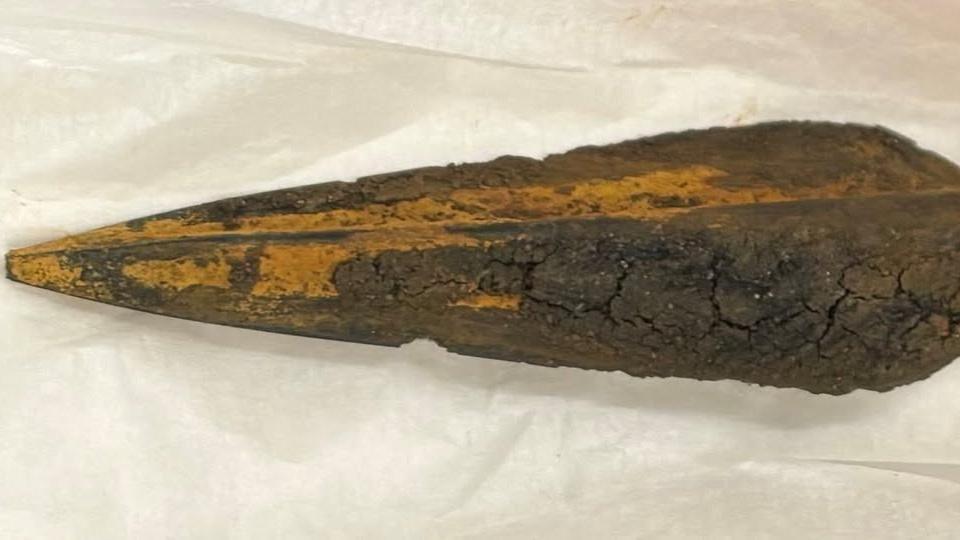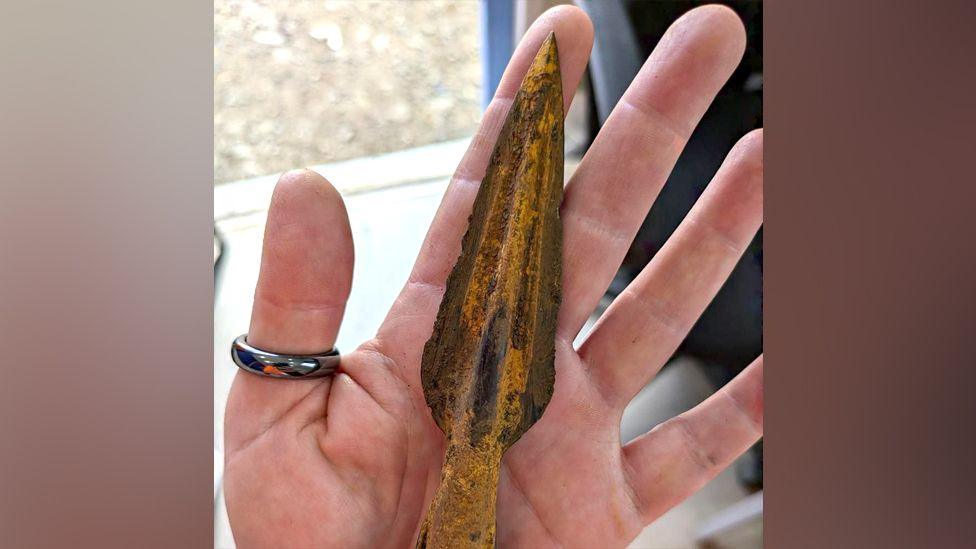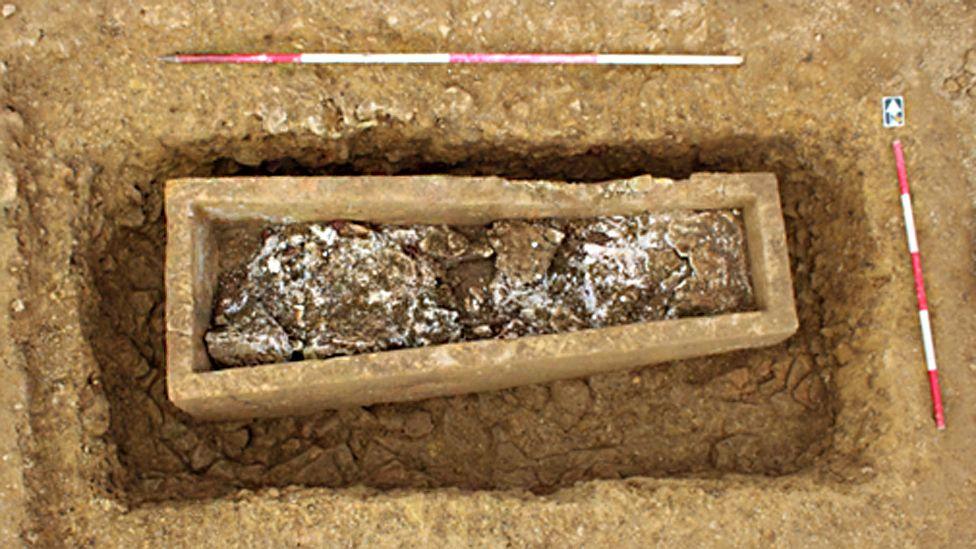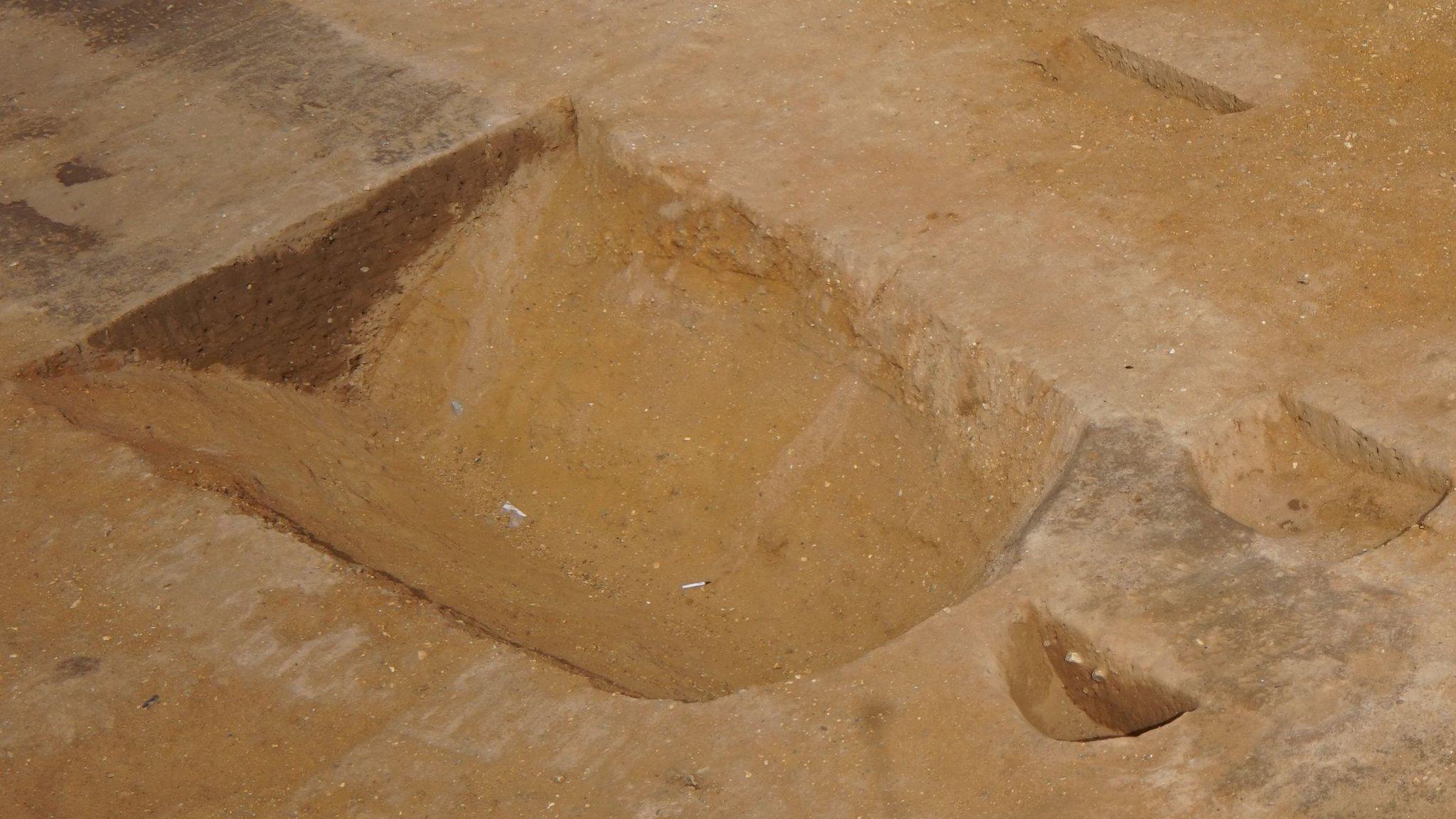A47 dig artefacts to be displayed at Norfolk Show

Several medieval spearheads were among the finds discovered during excavation works on the A47
- Published
Medieval spearheads and other historic artefacts found during road improvement works are to go on display at the Royal Norfolk Show.
National Highways is upgrading the A47 between North Tuddenham and Easton, to the west of Norwich, to a dual carriageway.
During excavations, construction workers found remains of "deserted medieval settlements and ancient spearheads", the government agency said.
The two-day county show, which has been running for more than 165 years, takes place on 25 and 26 June at the Costessey showground.

A bone flute was among the finds discovered during groundworks on the A47 upgrade, between Easton and North Tuddenham
The finds were discovered during early phases of work to upgrade the single-carriageway section of road.
Archaeologists found about 31kg (68lb) of pottery and other items, including metal, worked stone and bone.
Kate Bain, project manager at Headland Archaeology, said the finds, which also included a bone flute and buckles, actually revealed quite a traumatic time for the area.
"There was a huge increase in population in medieval Norfolk where farming and technology were advancing. People were farming more and more crops," she said.
"Unfortunately, it coincided with a climate change event called the 'Medieval warm period' where it started to get warmer and wetter and those crops started to fail, which exposed the population to famine and disease.
"Then came the Black Death which wiped out 60% of the population. So, these villages, which would have been recognisable all the way through the landscape like little hamlets, disappeared as people fled to urban settlements, leaving them behind."

The roadworks provided the chance "to find out more about the wonderfully rich cultural heritage in Norfolk", National Highways said
Chris Griffin, A47 project lead for National Highways, said: "The A47 works are primarily about improving safety on the roads but they also present a great opportunity – through the archaeology – to find out more about the wonderfully rich cultural heritage in Norfolk.
"When we started the work, we wanted to make sure we brought in the expertise to add one more piece to the historical puzzle of the landscape - and these finds will help us understand the past and learn about what we are today."
National Highways will be on Stand 217, on Avenue 10, at the Royal Norfolk Show.
Get in touch
Do you have a story suggestion for Norfolk?
Follow Norfolk news on BBC Sounds, Facebook, external, Instagram, external and X, external.
You may also be interested in
- Published7 January

- Published15 September 2016
